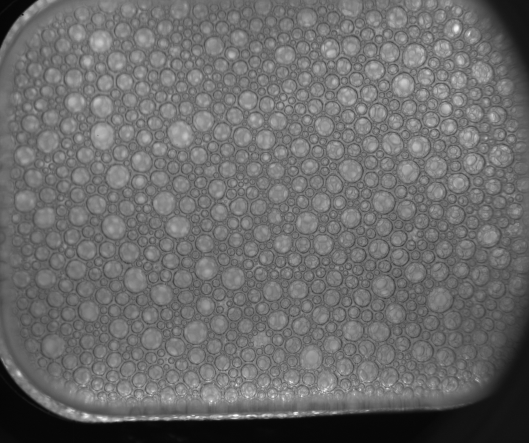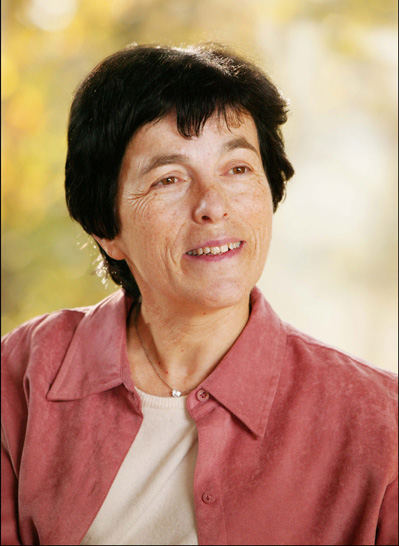First image of foam in the SMD container, taken on March 9, 2020
(liquid fraction 15%; window size 1.2 cm x1 cm)
Foams are dispersions of bubbles in liquids or solids and have many applications. It is therefore important to master the conditions in which they are stable. During their elaboration, the foams contain significant amounts of liquid, which flows quickly due to gravity. Experiments were planned in microgravity conditions to suppress drainage and to study the other foam destabilisation processes, ripening (growth of bubbles due to gas transfer between them) and coalescence (fusion of bubbles). The expectations were to stabilize foams with large liquid fractions f, which is impossible on Earth. Above a liquid fraction f ~ 36%, the bubbles disconnect. This is a jamming transition, which is found in other systems such as powders and grains or automobile traffic. The study of this transition in foams was another goal of the foam microgravity project.
Coalescence studies were performed in parabolic flights and in the International Space Station (ISS) in 2009 and 2012, they will be described. Coarsening is a much longer process and required the design of a suitable experiment container to be installed in the Fluid Science Laboratory of the ISS. A container called SMD (Soft Matter Dynamics) was constructed by Airbus. It includes light scattering and imaging diagnostics and it was installed in the ISS in 2018. The measurement capabilities of this container can be used to study different materials in exchangeable sample cell units, such as granular media, foams and emulsions. The container will be described.
Ripening experiments with foams in this container started in 2020. The SMD container includes a camera to measure bubble size distribution at the surface of the cell, and several multiple light scattering diagnostics to measure the bubble size in bulk as well as the foam dynamics, in particular inter-bubble rearrangements during ripening. The data are still under evaluation and preliminary results will be presented.


